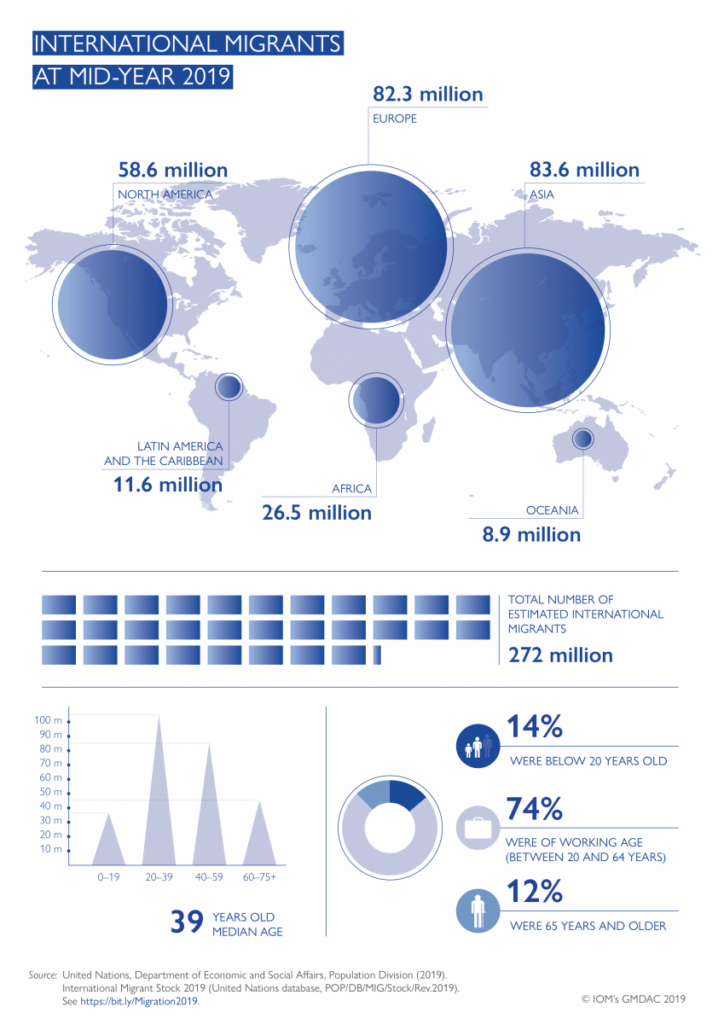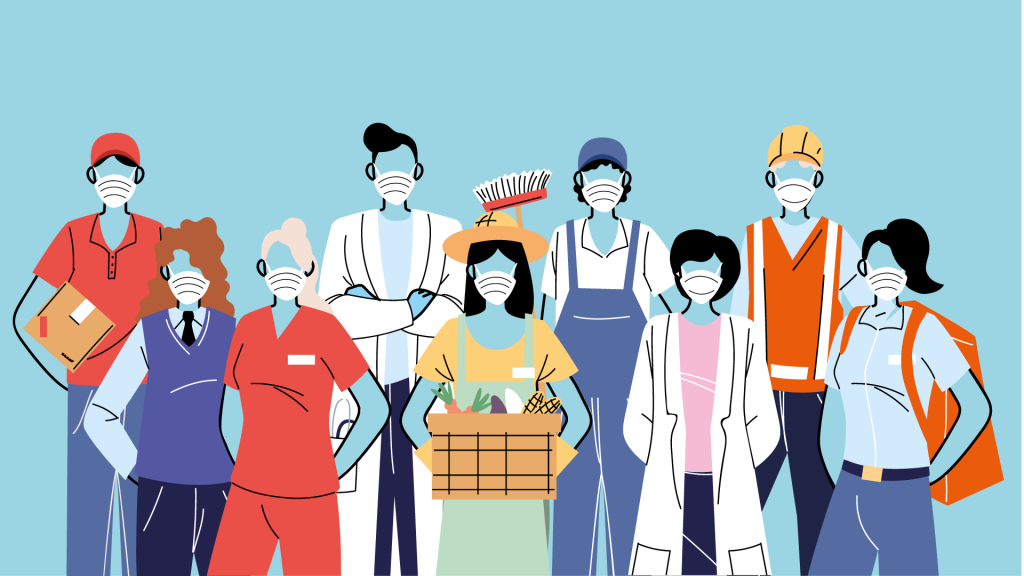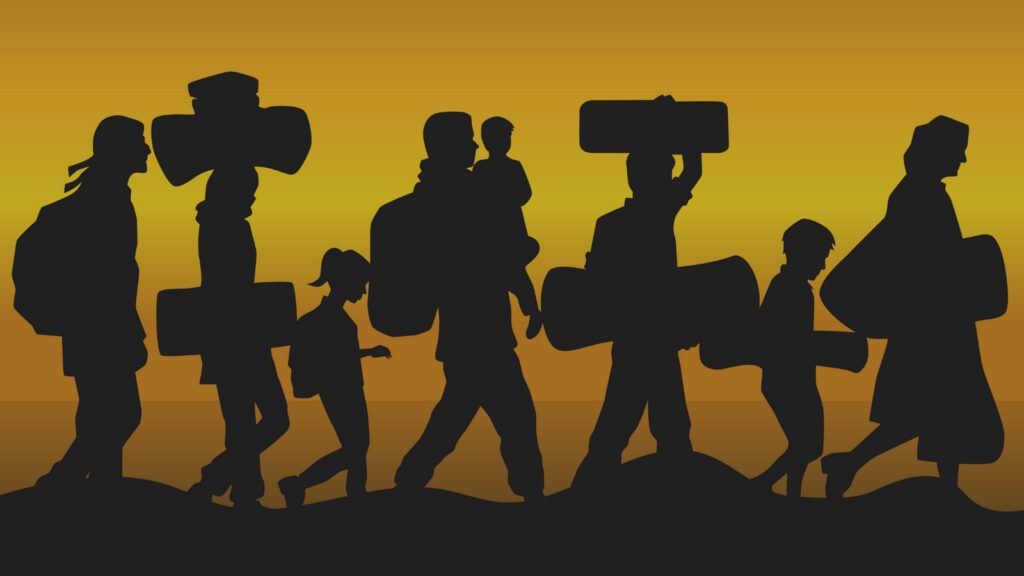As the world observes International Migrants Day 2020, ChangeMakr Asia emphasis the importance to recognise the rights of 272 million migrants living new lives and building new communities in every corner of the globe.
Since the earliest times, humanity has been on the move. Some people move in search of work or economic opportunities, to join family, or to study. Others move to escape conflict, persecution, terrorism, or human rights violations. Still others move in response to the adverse effects of climate change, natural disasters, or other environmental factors.
Today, more people than ever live in a country other than the one in which they were born. In 2019, the number of migrants globally reached an estimated 272 million, 51 million more than in 2010. International migrants comprise 3.5 per cent of the global population. Compared to 2.8 per cent in 2000 and 2.3 per cent in 1980, the proportion of international migrants in the world population has also risen.
While many individuals migrate out of choice, many others migrate out of necessity. The number of globally forcibly displaced people topped 70 million for the first time in UNHCR’s almost 70 year history at the end of 2018. This number includes almost 26 million refugees, 3.5 million asylum seekers, and over 41 million internally displaced persons
Human Migrations and Mobility in Uncertain Times
Today, more people than ever live in a country other than the one in which they were born. In 2019, the number of migrants globally reached an estimated 272 million, which 51 million more than in 2010. International migrants comprise 3.5 per cent of the global population. Compared to 2.8 per cent in 2000 and 2.3 per cent in 1980, the proportion of international migrants in the world population has also risen.
While many individuals migrate out of choice, many others migrate out of necessity. The number of globally forcibly displaced people topped 70 million for the first time in UNHCR’s almost 70 year history at the end of 2018. This number includes almost 26 million refugees, 3.5 million asylum seekers, and over 41 million internally displaced persons.

What has happened in migration ?
In the last two years, there have been major migration and displacement events that caused by great hardship and trauma as well as loss of life. Foremost have been the displacement of million of people due :
- Conflict ( such as from the Syrian Arab Republic, Yemen, the Central Africa Republic, the Democratic Republic of the Congo, and South Sudan)
- Extreme violence (such as inflicted upon Rohingya forced to seek the safety in Bangladesh)
- Severe economic and political instability (such as faced by millions of venezuelans)
- Impacts of environmental and climate change (such as planned migration relocation and large-scaled displacement triggered by climate hazard in Mozambique, the Philippines, China, and India)
We also learnt that the scale of international migration increase with recent trends. international migration is shaped by economic, geographic, demographic and other factors resulting in distinct migration patterns, such as migration ‘corridors’ developed over many years. Hence it’s not uniform.

Pandemic Highlights The Vulnerability of Migrant Workers
While migrants may be perceived as a threat to social cohesion, with the risk of being discriminated against and excluded, they are in fact are the unsung heroes of the Covid-19 pandemic. From hospitals to farmlands to restaurants and hospitality sectors, migrants are providing vital labor to keep societies afloat.
From almost the beginning of the coronavirus outbreak, migrants, refugees, asylum seekers and displaced people are not sitting idly by; in most cases they are the unsung heroes and front-line of the pandemic response. Far from being victims, migrants and displaced people reflect the best of what humanity has to offer. Despite countless adversities and untold suffering, they are often the first to step up and confront imminent threats, even giving their lives in the process.
Migrant workers are more likely to be employed on temporary contracts, earn lower wages and carry out tasks that are not compatible with teleworking. Medical professionals fighting the pandemic hail disproportionately from immigrant backgrounds. A 2018 study found that at least 17 percent of the American health-care workforce was not born in the United States – 1 out of 5 pharmacists and almost 1 out of 3 physicians were foreign born.
Similarly, the food and restaurant industries are arguably dependent on migrant labor. Of the approximately 400,000 agricultural workers in California, some 60 to 75 percent may be undocumented migrants, mostly from Mexico. As most of America’s workforce stays home, they remain in the fields, categorized as “essential” labor.
According to a new JRC analysis, that while the migrant workers employed in key occupations are not likely to lose their jobs in the middle of the pandemic, their direct exposure to the virus and possible lack of social protection make them vulnerable. On the other hand, workers who are performing less essential tasks for the coronavirus response face an increased risk of losing their jobs as companies struggle with the economic effects of the crisis.
Urgent Action Needed : Recognising Migrations is a Benefit that Works For All
Understanding changes in scale, emerging trends and shifting demographics related to global social and economic transformations, such as migration, help us make sense the uncertain and changing world we live in and plan better for the future.
Today and everyday, we need to reiterate the need to respect teh rights and dignity of all.



